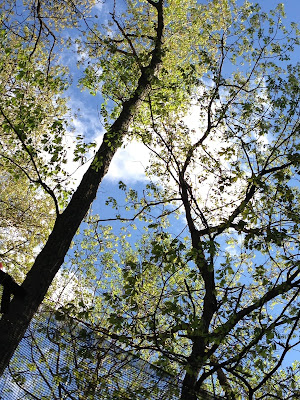Trees, Today
We have plunged through the humidity and come out on the other side. A morning cool as the underside of a pillow. Trees etched clearly against the sky.
I’m learning on the job now something I must have learned before but understand better — how much carbon trees absorb, the boon they are to our atmosphere. So when I look at them I see not just trunk and leaf, but a busy factory.
On a sultry day it’s harder to believe what they do for us, the air heavy with earthly exhale. But on a morning like this I can feel their power, their cleansing power. It’s not scientific, of course. It’s only metaphor. But it makes me a believer just the same.



